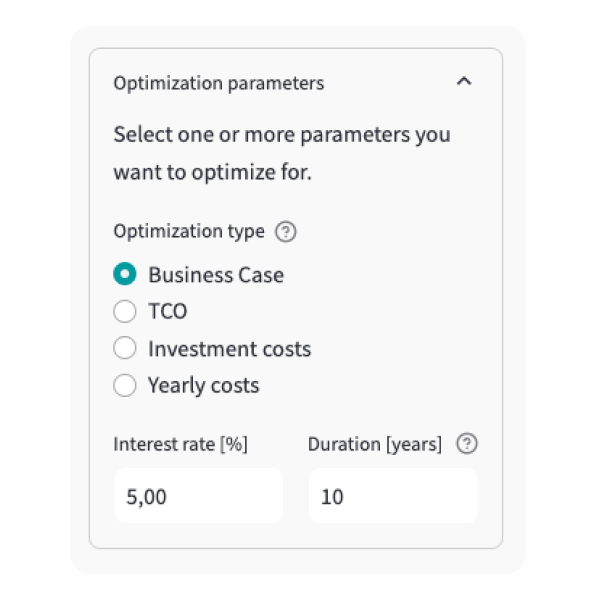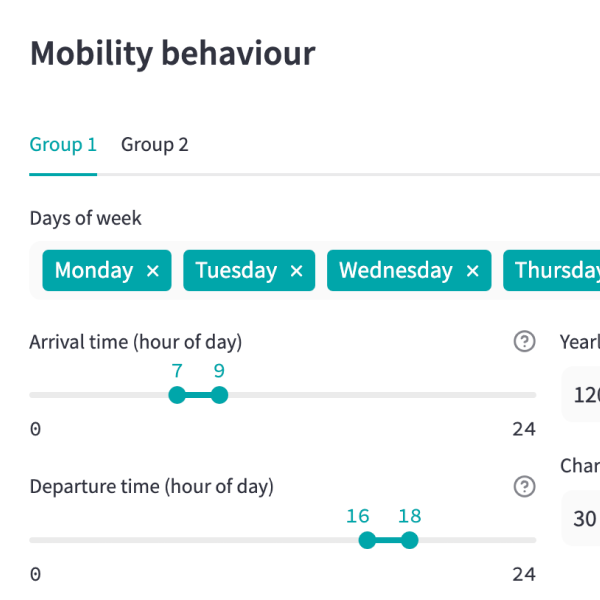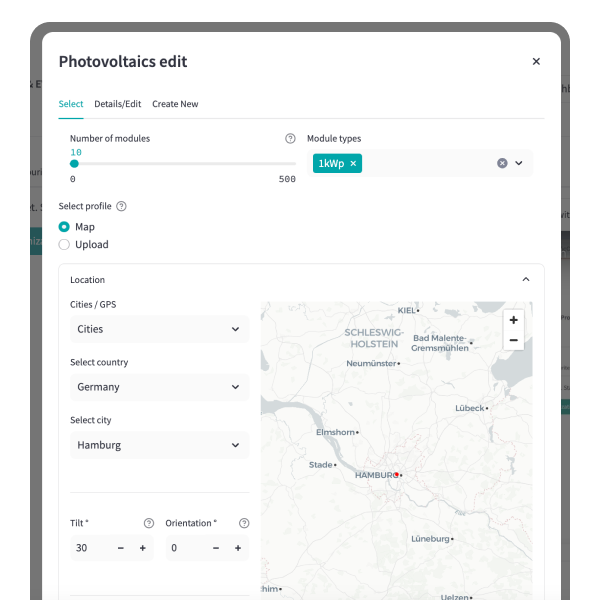Fleet Management
elbwire for Fleet Management
Optimization and efficiency improvement for your fleet – from planning to implementation.
Optimization and efficiency improvement for your fleet – from planning to implementation.
In today’s world, fleet managers face the challenge of transitioning their vehicle fleets to electric mobility while simultaneously optimizing energy costs and usage. Questions often arise, such as whether a rooftop photovoltaic (PV) system is worthwhile and how an existing PV system can be leveraged for the self-consumption of electric vehicles. Elbwire offers a comprehensive solution that addresses these issues, helping you make the transition efficiently and cost-effectively.
elbwire supports fleet managers in the seamless and economical transition from combustion engines to electric vehicles by providing precise Total Cost of Ownership (TCO) calculations and helping to identify the most cost-effective solutions.
The app enables the integration of solar energy (PV systems) into your fleet management strategy. It calculates the optimal combination of vehicles, charging infrastructure, and PV modules to reduce operational costs and enhance environmental performance.
elbwire designs and optimizes the charging infrastructure to ensure that electric vehicles are always ready for use. This includes planning the optimal number and type of charging stations while considering peak loads and energy demands.
Allows the creation and management of mobility groups with detailed parameters such as arrival and departure times, specific schedules, and annual mileage to maximize fleet efficiency.
Planning and optimization of charging points, taking into account the number, type, and costs of charging stations. This feature helps design the charging infrastructure to be perfectly aligned with the fleet's needs.
The ability to plan and integrate PV modules to reduce fleet operating costs by utilizing solar energy. Elbwire takes into account location, number of modules, type, and installation costs.
This feature allows you to calculate the total costs for your electric fleet, including investment and operating costs, enabling you to make the most economical decisions for your fleet.



Frank, the fleet manager of a mid-sized company, faced a critical challenge: transitioning the entire vehicle fleet from combustion engines to electric vehicles. The executive team had been driving luxury combustion cars and planned to switch to BMW i7s, while employees were set to use Smart EQs and Tesla Model 3s. Beyond selecting the right vehicles, the question arose of how to optimally design the charging infrastructure to meet the diverse needs of users while reducing operational costs through the use of photovoltaic systems. “We needed a solution that considered all aspects—from analyzing charging needs to seamlessly integrating PV systems,” Frank explains.
After extensive research, Frank chose the elbwire app. “I was impressed by the software’s flexibility from the start,” Frank shares. The app allowed him to analyze the specific charging requirements of each user group and develop a tailored solution for the charging infrastructure. It was particularly important to him that elbwire enabled the extensive utilization of load management potentials and provided a detailed cost-benefit analysis. “The app did exactly what we needed: comprehensive yet specific planning,” Frank concludes.
With the elbwire app, Frank began planning the charging infrastructure. “It wasn’t an easy process,” Frank admits. “We had to reassess our existing resources and rethink the entire load management.” However, the results were convincing: the integration of photovoltaic systems significantly reduced operational costs, while charging times were optimized to maximize vehicle availability. Thanks to the simulation of various scenarios, Frank found the most cost-effective solution for the company.
Today, Frank looks back on the transition with satisfaction: “With elbwire, we created a charging infrastructure that is perfectly tailored to our needs.” The solution not only contributed to reducing energy costs but also led to a significant reduction in CO2 emissions. “We’ve become not just more efficient, but also more sustainable,” Frank emphasizes.